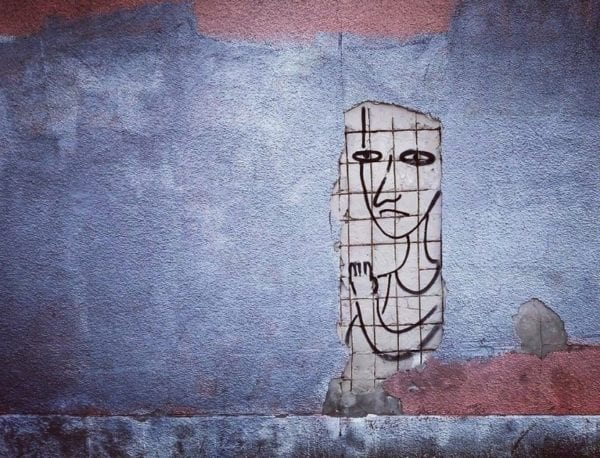
On Monday, October 7, 2019, Desert X, a contemporary art nonprofit based in Southern California, announced a partnership with the Saudi Arabian government. The American organization is set to open an international contemporary art exhibit in early 2020 in northwestern Saudi Arabia. This controversial project will be funded by the government’s Royal Commission for Al-Ula and looks to both help expand the country’s limited tourism opportunities and increase the cultural contact between Saudi Arabia and Western countries.
Despite the controversies surrounding the Saudi Arabian government, Desert X founder and board president Susan Davis has repeatedly defended the partnership by stating that it is a chance to help create “a new dialogue, one that reaches across boundaries and borders.” The Saudi Arabian exhibit, which will be on view from January to March 2020, looks to “bring together artists from Saudi Arabia and the surrounding region with artists from around the world,” according to the Desert X website. This exhibit allows viewers and artists to explore various topics, such as feminism and the environment, which are typically off-limits topics in Saudi Arabia. According to Desert X artistic director Neville Wakefield, none of the artists he has reached out to have declined due to political or ethical reasons; on the contrary, many have embraced the opportunity to work freely in an environment that has had many artistic restrictions in the past. According to multimedia artist Manal AlDowayan, no restrictions, as of yet, have been placed on what can be created for the exhibition
Many of the artists to be included in the exhibit, including Los Angeles based artist Lita Albuquerque, believe that art should be created free of political positioning. “I think art transcends a lot of political issues,” Albuquerque says of her involvement in the exhibit, “it’s about wanting to utilize art to make a statement and to help communicate” (Vankin, October 7, 2019). The exhibition is set to be co-curated by three individuals: Wakefield and two female Saudi artists, Raneem Farsi and Aya Alireza. Farsi believes that this exhibit will not only provide a cultural diffusion between the two countries, but also allow for a special education opportunities for the students in Saudi Arabia. “It wasn’t part of our upbringing here to be exposed to all this art and culture,” says Farsi. Albuquerque, for example, is creating a form of land art that highlights a futuristic female astronaut teaching the Earth about the stars (Vankin, October 7, 2019).
Although there are many positive aspects to the exhibition, many believe that the exhibition involves too many compromises with a repressive regime. Three of the original fourteen members of Desert X’s board of directors have resigned following the announcement of the partnership between the organization and the Saudi Arabian government. The resignations came from to the members’ refusal to work with a government that has repeatedly been accused of human rights violations, discrimination toward the LGBTQ community, and the murder of journalist Jamal Khashoggi. Former curator Yael Lipschutz, one of the three members to resign, said the decision to work with the Saudi Arabian government is “about striking a deal with a national government that has committed a horrific genocide in Yemen, that is completely undemocratic and that has an appalling record of discrimination against the LGBTQ community.” Lipschutz believes that the partnership is not about the potential to increase the dialogue between the two countries and to expand Saudi Arabia’s cultural practices, but rather, it’s about “receiving money from the Saudi royal family” (Vankin, October 7, 2019).
Shortly after the announcement, one Desert X donor withdrew funding while releasing a statement that they were “disappointed that Desert X has chosen this path.” While the act of accepting money from such a politically-polarizing country is one worrisome part of the partnership, some worry about the potential use of art as a cultural distraction to divert attention from the problems of the Saudi Arabian government. Artist Ed Ruscha, another former board member of Desert X, states that “I see Saudi Arabia as being in desperate need of cultural legitimacy, and this is a way to move the spotlight away from their other problems. It’s like inviting Hitler to a tea party in 1943 — I see a simile here” (Vankin, October 16, 2019).
This Desert X and Saudi Arabia partnership is just one example of what might happen when artists work with unethical or controversial figures. While some believe that art should be created independent of outside factors, many still believe that art can do some good in the messy and complex world of everyday life. Can the good effects of art be outweighed by the means and potentially worrisome partnerships that have to be used to do achieve them?
Discussion Questions:
- What ethical conflicts drive the controversy over Desert X’s partnership with the Saudi government?
- Do you believe working with a controversial figure or government is unethical? Does it become more problematic if money is being exchanged?
- Do the potential positive impacts of the exhibition outweigh the negative consequences?
- What ethical guidelines might companies and artists follow in working with governments charged with repressive or reprehensible behavior?
Further Information:
Brian Blueskye, “Desert X collaborates with Saudi Arabia on exhibition at a UNESCO World Heritage site.” Desert Sun, October 8, 2019. Available at: https://www.desertsun.com/story/life/2019/10/07/desert-x-collaborates-exhibition-saudi-arabia/3901816002/
Deborah Vankin, “Desert X art exhibition heads to Saudi Arabia – and into contentious territory.” Los Angeles Times, October 7, 2019. Available at: https://www.latimes.com/entertainment-arts/story/2019-10-07/desert-x-saudi-arabia-alula
Deborah Vankin, “Desert X show in Saudi Arabia brings more fallout: A donor pulls out.” Los Angeles Times, October 16, 2019. Available at: https://www.latimes.com/entertainment-arts/story/2019-10-16/desert-x-saudi-arabia-alula-donors
Ella Peek, “Ethical Criticism of Art.” Available at: https://www.iep.utm.edu/art-eth/
Jackie Northam, “Investors Are Back in Saudi Arabia a Year After Khashoggi’s Killing.” National Public Radio, October 2, 2019. Available at: https://www.npr.org/2019/10/02/766494653/investors-are-back-in-saudi-arabia-a-year-after-khashoggis-killing
Authors:
Draven Schoberg & Scott R. Stroud, Ph.D.
Media Ethics Initiative
University of Texas at Austin
November 11, 2019
Image Credit: Rostyslav Savchyn/Unsplash
This case study can be used in unmodified PDF form for classroom or educational settings. For use in publications such as textbooks, readers, and other works, please contact the Center for Media Engagement.
Ethics Case Study © 2019 by Center for Media Engagement is licensed under CC BY-NC-SA 4.0



